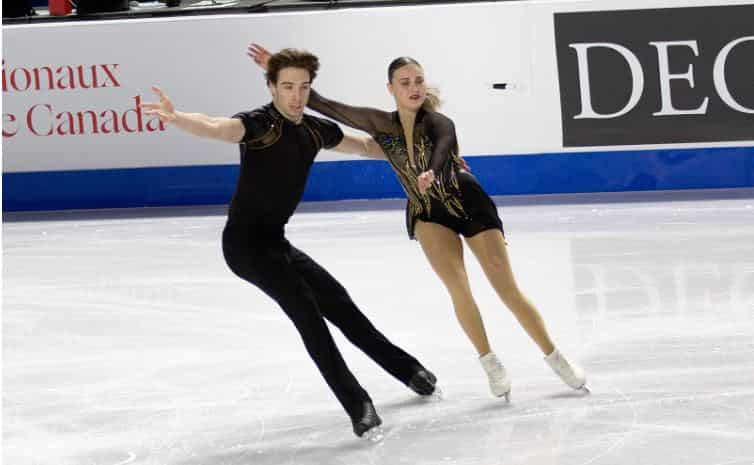In the Great White North, figure skating is akin to religion. While Canadians are stereotypically known as hockey fanatics, they also have an equally fervent obsession for the artistry and athletics of skating. From tiny makeshift backyard rinks to the grand Olympic stage, figure skating captivates Canadians young and old alike when blades grace the ice.

But for newcomers, the competitive world of figure skating betting can seem colder than a Winnipeg windchill. With a myriad of jumps, a complex scoring system, and miniscule margins between winners and losers, understanding the nuances of the sport is critical for betting success.
So sharpen your skates and ready your loonies. Here is your beginner’s guide to everything you need to know before lacing up and plunging into the risky rink of figure skating betting. And use the guide at the link to sweeten the deal with the 1xBet Promo Code you can use for wagers: https://www.telecomasia.net/in/sports-betting/reviews/1xbet/promo-code/.
Know Your Axels From Your Lutzes
The first key is understanding the major jumps that earn skaters critical technical points. There are six main types – Axels, Lutzes, flips, loops, Salchows, and toe loops. Top skaters pack their programs with jaw-dropping quads – jumps with four revolutions – that make audiences gasp and judges reward with sky-high scores.
Pay close attention to a skater’s approach into the jumps, their takeoff, height, revolutions in the air, and landing stability. Their success rates and ability to recover gracefully from falls can make or break overall scores. A flawless quad toe-triple toe combination can launch a no-name skater onto the podium.
Spins That Thrill
The first key is understanding the major jumps that earn skaters critical technical points. There are six main types – Axels, Lutzes, flips, loops, Salchows, and toe loops. Top skaters pack their programs with jaw-dropping quads – jumps with four revolutions – that make audiences gasp and judges reward with sky-high scores.
Pay close attention to a skater’s approach into the jumps, their takeoff, height, revolutions in the air, and landing stability. Their success rates and ability to recover gracefully from falls can make or break overall scores. A flawless quad toe-triple toe combination can launch a no-name skater onto the podium.

Step Sequences That Shine
Don’t overlook the footwork and step sequences linking jumps passes together. The best skaters can make gliding across the ice look as graceful and effortless as a walk in the park on Bloor Street. Difficult turns, patterns, and no obvious tracing show mastery of edges and flow.
Sequins, Skirts, and Style
While costumes may seem trivial, attire and styling are part of the performance and personality. Pay attention to details – hand-sewn Austrian crystals versus cheap nylon sequins telegraph confidence and polish. Ill-fitting costumes and bedazzled monstrosities scream rookie.
Note music choices too. Bold dramatic programs with transitions and choreography timed to musical crescendos and punctuation will engage judges and audiences. Cookie-cutter songs and monotonous music can torpedo scores.
Past Medals Are No Guarantee of Future Gold
As with stocks, a skater’s past results are no guarantee of future podiums. Watch for injuries, coaching changes, growth spurts, equipment issues, and puberty that can throw even top competitors off their game. Today’s rising star could be tomorrow’s washed up has-been.
Age Ain't Nothing But a Number
Unlike gymnastics and other sports, figure skaters often peak long after their teens. Legends like Canada’s Patrick Chan prove experience and maturity can trump youthful energy. Don’t underestimate veteran 28-year-olds who land triple loops with effortless polish against junor jumping beans.
Scoring Systems Are Far From Chill
Don’t be intimidated by the scoring system. Here are the cliff notes: Technical elements like jumps and spins carry the most weight. But artistry, choreography, interpretation, and execution factor in too. Judges can be nitpicky, penalizing even slight two-foot landings or unstable spirals. Minuscule margins separate champions from runner-ups.
Rivalries Heat Up the Ice
From the Battle of the Brians to the dramatic face-off between Virtue/Moir and Davis/White, rivalries breed excitement and drama that captures attention. They could drive skaters to reach new technical and artistic heights or epic meltdowns under pressure. Keep your eyes peeled for such thrilling matchups.
Favor Sure Bets Over Long Shots
While upsets do happen, they’re uncommon in figure skating. It’s not like betting on hockey or basketball where favorites go down frequently. So favor established skaters with proven technical chops over inexperienced long shots with more personality than skill. Remember, heavy favorites frequently do win in this sport.
Start Small, Build Your Bankroll
As with any betting, manage your money wisely. Focus on smaller competitions first, betting small amounts as you learn the ropes. Build up your bankroll slowly, then make larger wagers as experience gives you confidence. And set a budget for entertainment rather than risky get-rich schemes.
Enjoy the Show!
At the end of the day, remember that figure skating is live performance art meets incredible athleticism. Regardless of your bets, take a moment to appreciate the poetry in motion when skates first touch fresh ice.
So grab your tuques and mitts. With this beginner’s guide, you’ll be ready to fearlessly skate out onto the unpredictable ice of figure skating betting. Just try not to get hooked – there are plenty more winter sports awaiting eager Canadian bettors!



